|
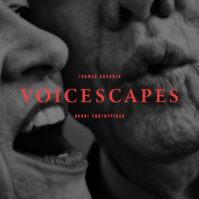 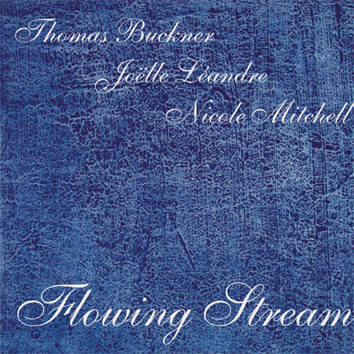 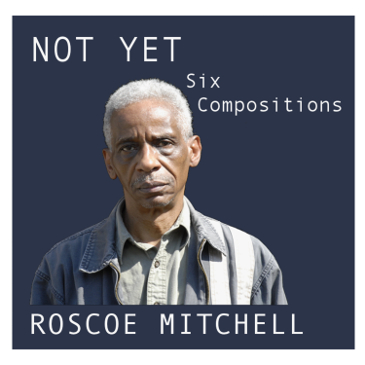 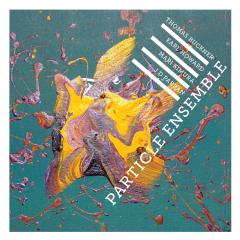 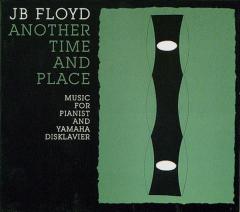 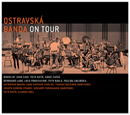 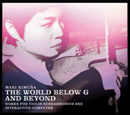 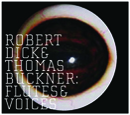    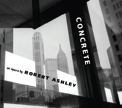 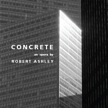  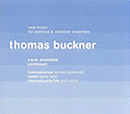  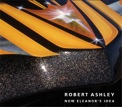 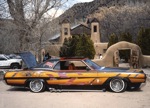  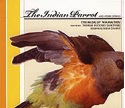 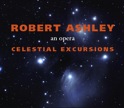 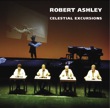  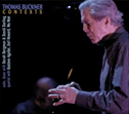 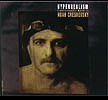 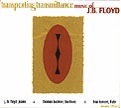  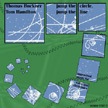 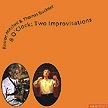 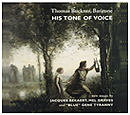 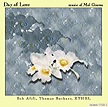 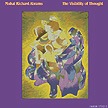 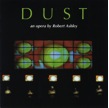 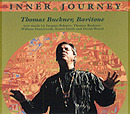 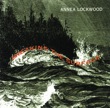 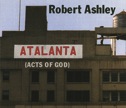 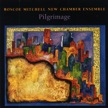 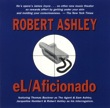 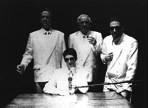 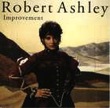 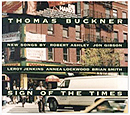 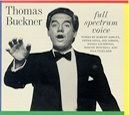 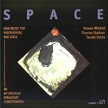
Solo Recordings:
……………
CONTEXTS
[Mutable Music]
Thomas Buckner – voice
David Darling – cello
Borah Bergman – piano
Earl Howard – composer and electronics
Gustavo Aguilar – percussion
Wu Man – pipa
My introduction to performing contemporary music was through free improvisation, back in 1965 in a group with drummer and electronic music pioneer David Wessel. An early influence was the Art Ensemble of Chicago whom I first heard in 1968, leading to a lifetime association with Roscoe Mitchell documented on a number of CDs, including the recent duo 8 O'Clock on the Mutable Music label.
I first played with Borah Bergman as a guest on his album with Roscoe Mitchell, First Meeting on the Knitting Factory label, and we have performed together since, at festivals in Europe and at the Vision Festival in New York. Borah is a true original, with a formidable technique and a fierce dedication to improvised music. I've been a fan since I first heard him in New York in the early eighties.
I've long admired the work of David Darling, whom I first heard in the 70s with Paul Winter's ensemble. In 2002 we both performed in J. D. Parran's Omegathorpe, soon to be released on the Y'all label, which led to our mutual interest in working together again. I have always been struck by the deep humanity of David's work, conveyed with a beautiful tone and flawless technique on cello and electronics.
I am grateful to Borah and David for the time they have put in to develop these pieces, and for sharing their unique properties in improvisation with me. My solo piece is part of a lifelong preoccupation with solo improvisation which has included solo evening length concerts as well as individual pieces. – Thomas Buckner
HIS TONE OF VOICE – Thomas Buckner
[Lovely]
Works by "Blue" Gene Tyranny, His Tone of Voice at 37, Mel Graves, Meditations on Truth, and Jacques Bekaert, Orfeo
Thomas Buckner, baritone. With Jeffrey Berman, vibraphone; Josef Bergstaller, trumpet; Jay Elfeinbein, contrabass; Ethel (Todd Reynolds and Mary Rowell, violins, Ralph Farris, viola, Dorothy Lawson, cello); Mel Graves, contrabass; Benjamin Herrington, trombone; Leroy Jenkins, solo violin; Joseph Kubera, harpsichord; Jacqueline LeClair, oboe; Ted Mook, cello; Bill Ruyle, bowed marimba; Stefani Starin, flute; "Blue" Gene Tyranny, piano; and Christopher Berg, conductor for His Tone of Voice at 37.
On this collection, Thomas Buckner brings us three works about man's spiritual quest for truth and goodness. The central character in "Blue" Gene Tyranny's collection of songs, His Tone of Voice at 37, realizes something that he had always known, but forgot that he knew—a secret that frees him to search for a place where there are no more wars or suffering. Mel Graves draws his inspiration for Mediations on Truth from the poems of the 15th-Century Sufi poet, Kabir, whose style was at once, irreverant yet intensely spiritual. Jacques Bekaert brings us the story of the gentle Orfeo, who has become a symbol of marital fidelity, non-violence, and of the artist whose greatest ambition is to make the world a better place.
INNER JOURNEY – Thomas Buckner
[Lovely]
Thomas Buckner – baritone
Leroy Jenkins – viola
Joseph Kubera – piano
J.D. Parran – bass clarinet
Stefani Starin – flute
David Wessel – synthesizer
Orchestra of the SEM Ensemble:
Petr Kotik – conductor
Recorded and mixed by Tom Hamilton.
This CD contains works by William Duckworth, Thomas Buckner, Jacques Bekaert, David Wessel and Somei Satoh – united by their themes of the quest for self knowledge. Composed of fragments from the works of F. Scott Fitzgerald, Henry Miller and Gertrude Stein, and Thomas McGrath, William Duckworth's text reveals the multiple perspectives of an unknown couple whose post-modern love story emerges. Thomas Buckner's improvisation, Inner Journey, is dedicated to the spirit and musical techniques of a beloved friend. Jacques Bekaert takes musical material from a popular Cambodian song to reflect some of the emotions, hopes and pains anyone approaching that tragic land must feel and evoke an inner landscape. In the David Wessel's piece, Buckner's musical discourse is with the computer. Finally, Somei Satoh compares his work for voice and orchestra to his own meditation, "serene on the surface, yet burning vehemently like a flame."
SIGN OF THE TIMES -Thomas Buckner
[Lovely]
Thomas Buckner – baritone
Stefani Starin – flute, alto flute and khaen
Jon Gibson – soprano saxophone
Leroy Jenkins – viola
Joseph Kubera – piano
Bill Ruyle – percussion
The compositions on this CD were all commissioned and premiered as part of the "Interpretations" concert series that I co-produce with the World Music Institute. It is not my practice in commissioning a piece to choose text or even a subject, even when asked by the composer. Rather, I enter into a dialogue with the composer to discover an area of mutual concern. I wish to thank the five composers represented on this disc for collaborating with me in making new music that deals with contemporary social and spiritual concerns.
FULL SPECTRUM VOICE – Thomas Buckner
[Lovely]
Thomas Buckner – vocals
Tony Barrero – trumpet
Jon Gibson – clarinet/flute
J.D. Parran – bass clarinet and baritone saxophone
"Blue" Gene Tyranny – synthesizer
Joseph Kubera – piano
Tom Hamilton – synthesizer
Michael Pugliese – timpani and percussion
For twenty-five years, the experimental composers of Manhattan's vital downtown scene have been the primary interpreters of their own music. Recently, however, a number of expert performers have begun championing them, and no vocalist has given them more of his time and talent than Tom Buckner. The composers on this CD, a varied cross-section of new music circa 1990, are all close to that experimental scene, and this disc represents a small part of what Buckner has done to create an sustain a vocal new-music tradition in New York.
Collaborations Including Thomas Buckner:
……………………………….
Voicescapes – RANDI PONTOPPIDAN & THOMAS BUCKNER (2021)
Randi Pontoppidan and Thomas Buckner started singing together almost immediately when they met in 2017. From a serendipitous session at Pontoppidan’s home to performances at Copenhagen’s Monday Club, they discovered a shared language of improvisation, musical invention and spiritual connection. In 2018, they recorded at Karmacrew Studio with engineer John Fomsgaard, on the beautiful island of Møn, Denmark. With no preconceived musical material, no overdubs and no sound sources other than voices, Voicescapes documents the spontaneous music of two kindred souls.
Flowing Stream – Thomas Buckner, Joelle Leandre, Nicole Mitchell
Thomas Buckner – voice
Joelle Leandre – bass
Nicole Mitchell – flute
This CD is the result of the first meeting of Thomas Buckner (voice), Joelle Leandre (bass) and Nicole Mitchell (flute) at New York's Vision Festival in 2012. As Stuart Broomer writes in his liner notes, "Flowing Stream occupies that primal and illuminating musical ground that is most useful, where both our identity springs and where our hearing becomes most acute, where sound, consciousness and survival are invisibly entwined. It is the improvisation of the human community itself."
ROSCOE MITCHELL – Not Yet
[Mutable Music]
William Winant – percussion
Jacob Zimmerman – alto saxophone
Dan VanHassel – piano
Eclipse Quartet
James Fei Alto Quartet
Thomas Buckner – baritone
Petr Kotik – conductor
A monumental recording of recent concert works by Roscoe Mitchell, for solo percussion, alto saxophone & piano, string quartet, alto saxophone quartet, baritone & chamber orchestra. Recorded live at Jeannik Mequet Littlefield Concert Hall, Mills College, Oakland, CA, March 31, 2012. Live recording and mixing by Robert Shumaker assisted by James Frazier.
Since the early 1960's composer Roscoe Mitchell has been a vital force in American music. An acclaimed saxophonist, Mitchell tours regularly throughout the United States and overseas. He is a member of the Association for the Advancement of Creative Musicians and a founder of the Art Ensemble of Chicago. Recently he appeared to great critical acclaim with the Art Ensemble of Chicago and The Orchestra of the S.E.M Ensemble as soloist and composer on tours in the United States and Europe. Recent compositions include Variations and Sketches From The Bamboo Terrace for chamber orchestra (1988), Contacts, Turbulents (1986), Memoirs of A Dying Parachutist for chamber orchestra with poetry by Daniel Moore (1995), Fallen Heroes for baritone and orchestra (1998), The Bells of Fifty Ninth Street for alto saxophone and Gamelan Orchestra (2000), 59A for solo soprano saxophone (2000), and Non-Cognitive Aspects of the City (2002) with text by Joseph Jarman.
PARTICLE ENSEMBLE – Particle Ensemble
[Mutable Music]
Thomas Buckner – baritone voice
J D Parran – bass saxophone, alto flute, bamboo flutes, mbira
Mari Kimura – violin
Earl Howard – electronics, saxello
Thomas Buckner, Earl Howard, Mari Kimura, and J D Parran join forces in the Particle Ensemble. The ensemble – formed after several successful collaborations – perform compositions and improvisation by its members. The three works on this release were all recorded live in concert and include a duo, a trio and a full quartet work. Compositions are by Parran and Howard, with a duo improvisation between Buckner and Howard.
A limited amount of CDR copies are also purchasable.
JB FLOYD – Another Time and Place
[Mutable Music]
JB Floyd, Liana Pailodze – Yamaha Disklavier
This compilation of JB Floyd's Keyboard Music with the aid of the Yamaha Disklavier, spanning over 30 years of his career, signifies the great breadth of his creative experience and his surprising individuality in such diverse disciplines of musical style.
"TRIBUTE For my Father"(1991) is a live performance by the composer. "SOLOS AND SEQUENCES I"(1999) is a composition for pianist and Yamaha Disklavier performed here by Liana Pailodze. "VARIATIONS-1979" was the first composition to capture the kind of music that Floyd has been improvising all his life. "WAVES: THE EBB AND FLOW"(1981) is related to the sounds of the Atlantic Ocean and its powerful, incessant wave motion. "SOLOS AND SEQUENCES II, for pianist and Yamaha Disklavier, performed by Liana Pailodze. The unique sounds of the Buchla Synthesizer inspires "PRINCE OF PENTACLES"(1979) by transforming the piano to enable it to realize many more possibilities of timbre. "ANOTHER TIME AND PLACE (1993), for Yamaha Disklavier, virtual instruments, percussion and solo pianist, performed by Doug Floyd and JB Floyd.
Spectrum – Muhal Richard Abrams and Roscoe Mitchell
[Mutable Music]
Janácek Philharmonic
Petr Kotik – conductor
Thomas Buckner – baritone
Muhal Richard Abrams – piano
Roscoe Mitchell – saxophone
Spectrum features an improvised performance by Muhal Richard Abrams andRoscoe Mitchell entitled Romu. This recording is also the first to feature Abrams's and Mitchell's work with orchestral forces. Mutable Music is very proud to be able to offer these premiere recordings. Abrams's Mergertone was commissioned by the Ostrava Center for New Music and premiered at the opening concert of the Ostrava Days 2007 festival by the Janåcek Philharmonic, Petr Kotik conductor. Mitchell's Non-Cognitive Aspects of the City was commissioned by Mutable Music for baritone Thomas Buckner, Petr Kotik and The Orchestra of the S.E.M. Ensemble and was premiered at the Willow Place Auditorium in February 2003.
In Crossing The Busy Street Music – JB Floyd
[Mutable Music]
JB Floyd – piano
Thomas Buckner – baritone
George Marsh – drums
This new recording of music by JB Floyd highlights the three main strands of his career: pianist, composer, improvisor. He composed In Crossing the Busy Street for baritone Thomas Buckner (a frequent collaborator of his) and piano, using a poem by Daniel Abdal-Hayy Moore. The musical material from this twenty-two minute song cycle then became the basis for further exploration as material for improvisations. Floyd then worked with drummer George Marsh (another long-time collaborator) on what became Improvisations on In Crossing the Busy Street.
J.B. Floyd's career as pianist, composer, and improviser has included classical recitals and solos with orchestra, new music solos and group collaborations, jazz improvisations, and multi-media presentations.
Kirili et les Nymphéas – Hommage à Monet
Improvised music at the Musée de l?Orangerie [Mutable Music]
Jérôme Bourdellon – flutes, bass clarinet
Thomas Buckner – baritone
Dalila Khatir – soprano
Roscoe Mitchell – alto & soprano saxophones
This deluxe package includes a film by Jean-Paul Fargier ? Habiter le Présent/To Live the Present, featuring the musicians recorded at the Musée de l?Orangerie. Enclosed as well are a 16 page booklet with color photos of the musicians among Alain Kirili?s sculptures and Monet?s paintings by Ariane Lopez-Huici, and a 20 page booklet containing an essay by French philosopher Paul Audi in both English and French.
Two musicians at the peak of their sensitivity: Roscoe Mitchell and Jérôme Bourdellon. A singer at the height of his finesse: Thomas Buckner. A woman of intelligent and generous beauty: Dalila Khatir, whose singing takes its source from the dance? or the dance from the singing, we shall never know. These are the musicians intimately involved with Hommage à Monet, the latest in an ongoing series of collaborations between the artist Alain Kirili and improvising musicians, dancers and composers over many years. Other collaborators have included violinists Leroy Jenkins and Billy Bang, saxophonists Joseph Jarman and Steve Lacy, trombonist Roswell Rudd, pianist Cecil Taylor, dancer Maria Mitchell, and composers Alvin Lucier and Somei Satoh. The improvisatory energy that is palpable in Kirili's sculpture and drawing is in part inspired by his deep relationship with improvised music, and this energy in turn inspires the musicians and dancers to make the energy in the sculpture audible and visible. Hommage à Monet is also the latest in a series of dialogues with great artists of the past that Kirili has exhibited in major museums over many years. Bourdellon, Buckner, Khatir, and Mitchell participated in this project and had the opportunity to respond musically and kinetically to the dialogue between Alain Kirili's sculpture and one of the greatest icons of modern art, Claude Monet's "Les Nympheas"(Water Lilies). The performance took place on June 21, 2007 as a part of the great "Fete de la Musique" that occurs all over France on the longest day of the year. The Musee de l?Orangerie graciously allowed a performance in the presence of the newly reinstalled Nympheas, and gave the musicians and filmmaker Jean-Paul Fargier access to the museum on the day before the performance for rehearsal and filming of the DVD.
[Lovely]
Music & Libretto by Robert Ashley
Singers: Sam Ashley, Thomas Buckner, Jacqueline Humbert, Joan La Barbara
Orchestra samples design: Robert Ashley
Mixing, Mastering, and Live Processing: Tom Hamilton ( http://www.lovely.com/ )
Concrete follows from Robert Ashley's preoccupation in two previous operas with the kind of speech that has not been explored in opera — in Dust, the speech of the homeless; in Celestial Excursions, the speech of people living together in a home for old people. The three operas are not a "trilogy" in any sense, but they all come from this preoccupation with or fascination with special kinds of speech and special kinds of states of mind.
"The characters I'm interested in," Ashley explains, "are marginal, because everybody is marginal compared to the stereotypes. I am interested in their profoundly good qualities, and I'm not interested at all in evil. The characters in my work are as bizarre and unreal as the characters in William Faulkner. They just happen to be ordinary people who are spiritually divine." (The Wire, 2003).
Though in Concrete it is not made explicit in any way, the libretto might be considered to be the "musings" of an old man alone. He thinks about strange questions and even as the questions are asked they are answered in various forms of sarcasm, indifference, questions about the questions and explanations. In other words, he is talking to himself.
The opera takes the form of five "discussions" about matters he wonders about: Why do people keep secrets about themselves? Why do the buildings in the city all line up perfectly (vertically) when the surface of the planet is round? Why is it that so many things that people do as recreation are played counter-clockwise? What has happened to the many women friends ("lovers") he has had and "left behind" and why were they left behind? And, finally, the fact that he has recently seen a "flying carpet" (in his bedroom.)
The five "internal" discussions alternate with four reminiscences about people the old man has worked with and loved. The reminiscences are short and detailed biographies of seemingly ordinary people who in the past did extraordinary things — sometimes criminal, sometimes just brave in an unusual way — but will never be recognized for what they did. The stories will never be known, except to the audience. No one is named. These are secret lives.
The singers in the opera are not "characters" in any traditional way. They take part in the very fast "discussions" sections as voices in the old man's musings. Then each of the singers is given one of the "biographies" as a solo aria.
The Somewhere Songs – "Blue" Gene Tyranny
[Mutable Music]
The Somewhere Songs, for baritone, environmental, and electronic sounds
Thomas Buckner – baritone voice
The Invention of Memory, for baritone, string ensemble, guitar, and piano
Thomas Buckner – baritone voice
"Blue" Gene Tyranny – piano
This beautiful new recording by "Blue" Gene Tyranny includes the mysterious The Somewhere Songs cycle (1997-2001) for baritone voice and electronics, and The Invention of Memory (2003-2005) a lyrical discourse for baritone voice, string ensemble, guitar, and piano, The Somewhere Songs concerns friendships in or undergoing difficult circumstances. The narrator, in a sense, builds his own circumstantial world as he sings – the vocal part was composed first by singing spontaneously and the "transitional systems" (pitch/rhythm, etc., material) were derived from that vocal line to generate other acoustic and electronic parts. The question of the "true intentions" of the two former friends is of course left to the listener. The Invention of Memory is about the behavior and physiology of the brain.
In the course of reading, Tyranny was struck by what seemed to be rough parallels between the way that people have described forms of memory and certain musical procedures. This thought created a strange sensation in him – something about the true nature of music. The Invention of Memory was written to research this nameless correlation. An initial "Song", heard in a piano solo at the outset, provides a basic reference to which the players return, similar to a past event that is recalled in varied ways. The Song is then "scanned" by the players employing different musical procedures. Some of the musical forms employed are traditional (canonic imitation, passacaglia) while the majority are compositional procedures Tyranny developed for earlier pieces, including melodic transfers within a closed loop (from the transformational lattice score of Stars Over San Francisco,1972), drone with internal motion (from The Interior Distance,1959), camouflage (from Sleeping Beauty in Camouflage, 1992), and the song modulated by its own internal voice ("gravity" modulation from The Driver's Son, 1989 – present).
New Music for Baritone & Chamber Ensemble – Thomas Buckner
[Mutable Music]
Annea Lockwood
Luminescence – Tania Leon
Canto – Petr Kotik Conceptuality/Life
Performed by the ensembles S.E.M. and Continuum
Luminescence is a song cycle, commissioned by Thomas Buckner, and based on eight poems from Etel Adnan's "Sea", which evoke the Lebanese coast of the Mediterranean, her birthplace. The Pacific Ocean is also a strong presence in her life as in Thomas Buckner's and mine, and so the piece celebrates or three-way friendship and our shared love of that ocean, which influenced the first song: here, the phrase lengths match the timing of long Pacific waves which I recorded in New Zealand some years ago. I am most grateful to Etel for the gift of these poems and to Tom for this opportunity to work with him again. – Annea Lockwood
Canto is a song cycle for baritone and mixed ensemble. Rhythmically driven lines orbiting each song around its core. A multi-dimensional checkerboard of harmonic colors. Diaspora of images in words. Poetic voices of Cuban roots at the center of a musical universe. – Tania León
Conceptuality/Life was created for Thomas Buckner to be performed at his recital at Merkin Concert Hall on May 22, 2003. The baritone solo has been excerpted from Explorations in the Geometry of Thinking (1978-82) for multiple voices on texts by R. Buckminster Fuller from his magnum opus Synergetics. The text for Conceptuality/Life uses excerpts from the chapter entitled Conceptuality, subsection Life. The baritone solo is sung simultaneously with instrumental sections excerpted from Chamber Music (1982). There is no general score and the superimpositions of individual sections are prearranged during rehearsals. The pulse of the music (one syllable note in the voice part, and eight note in the instrumental parts), unites all simultaneously performed parts into one homogenous unit. – Petr Kotik
Timeless Pulse Quintet
[Mutable Music]
Timeless Pulse:
Thomas Buckner – voice
George Marsh – percussion
Pauline Oliveros – accordion
David Wessel – live-electronics
Jennifer Wilsey – percussion
Formed in 1993 in a residency at the Deep Listening Institute, the musicians of Timeless Pulse – whose members come from jazz, classical and electronic – make music together through listening and responding in the moment. The five compositions on this recording from 2005 are warm, compassionate tapestries of soft, rolling sounds performed by accordion, cymbals, drums, gongs, bells, chimes, sampled sounds, and voice.
[Lovely]
Music & Libretto by Robert Ashley
Singers: Sam Ashley, Thomas Buckner, Marghreta Cordero, Jacqueline Humbert, Joan La Barbara, Amy X Neuburg, Robert Ashley
Mixing and Electronics: Tom Hamilton
Robert Ashley's NOW ELEANOR'S IDEA is a quartet of short operas based on the notion of a sequence of events seen from four, different points of view. At the same time, each opera is an allegory, like Bunyan's Pilgrim's Progress, for an individual's self-realization within the context of a major religion found in the United States. Improvement takes its imagery and plot from Judaism, Foreign Experiences from Pentecostal Evangelism, eL/Aficionado from Corporate Mysticism, and Now Eleanor's Idea from (Spanish) Catholicism.
The inspiration for these works came specifically from four sources: the work of the historian, Frances A. Yates (1900-1983), whose specialty of interests included the influence of Kabbalistic mysticism on the birth of modernism and scientific philosophy in Italy in the 16th century (as a result of the expulsion of Jews from Spain during the Inquisition); the writings of Carlos Castaneda (and the arguments about him as a writer and about the intentions of his work); Low Rider Magazine, the fan-cult magazine of the Low Rider movement in the Southwestern United States; and finally, corporate vocabulary, what it sounds like and how it is used in popular publications, like The New York Times, The Wall Street Journal or Fortune Magazine.
While working at The Bank, the title character, Now Eleanor, has a sort of "religious experience" that fills her with an "approach of the end of the world feeling." This feeling compels her to leave her job in the Midwest, move to New Mexico, and become a newscaster to try to discover the point where the religions of America – Judaism, Protestantism, Business and Catholicism – merge. But there is more in store for her than she realizes…
TOTEM
[Mutable Music]
Jérôme Bourdellon – flutes and shakuhachi
Thomas Buckner – voice Improvisations with the sculpture of Alain Kirili
In August of 2005, on a visit to Paris to celebrate the birthday of sculptor Alain Kirili, singer Thomas Buckner and flutist Jérôme Bourdellon gathered with Kirili at his studio to record these duo improvisations in the presence of his group of sculptures entitled "Totem". Both musicians are longtime collaborators with Alain Kirili, performing most recently at a concert at the Theatre du Palais Royal in Paris celebrating to opening of an installation of his sculptures in the garden of the Palais Royal. The music is a spontaneous, abstract response to and interaction with the sculpture.
THE INDIAN PARROT – W. A. Mathieu
[Mutable Music]
Thomas Buckner – baritone
Joseph Kubera – piano
Devi Mathieu – soprano
Suzanne Elder-Wallace – alto
Bob Afifi – alto flute
Shira Kammen – viola
Daniel Kennedy – frame drums
A Parrot, Three Fish, and a Donkey is a modern piece with a medieval text, and medieval sensibilities have worked their way into the musical fabric: the small percussion instruments, the instrumental range lying (for the most part) within the range of the human voice, and, most of all, the harmony, which is a kind of modulating modality. Inspired by the universality of Rumi?s poems, Mathieu felt especially free in this piece to borrow from many centuries of Eastern and Western harmonic practice.
Daniel Abdal-Hayy Moore's The Blind Beekeeper is a wonderful poem. It asks the soloist-narrator to simultaneously play so many roles. His first line is spoken: "I'd like to make a movie called The Blind Beekeeper?" and from then on he is above all a movie pitch-man — and we are producer-angels deciding if we are going to invest in this guy's nutty movie. But he is also telling a dramatic and compelling story, empathizing with a diverse array of characters. And, since (at least in live performance) he will lead an audience of angels in transformative acts of bee-participation, he becomes our conductor as well. Finally, of course, he's a concert baritone giving a performance of a contemporary art song, a circumstance true even for the most post modern of us.
The piece is divided along the lines of a standard three-reeler: In the expository first reel (parts 1 and 2 of the text), we see Henry's history and very special talent; then we are inside the hive, and meet the bee protagonists. The second reel (part 3) is all action and adventure: the lover-bees get into serious trouble. The third reel (parts 4 and 5) is the triumphal rescue and final celebration. By the end we have seen a bee-movie about very small events as well as very large ones. Like a good children's story, it is at the same time a slightly silly tale and a noble miracle play.
[Lovely]
Text, music and direction by Robert Ashley
Singers: Sam Ashley, Thomas Buckner, Jacqueline Humbert, Joan La Barbara and Robert Ashley
Choreography: Joan Jonas
Electronic orchestra: Robert Ashley and Tom Hamilton
Mixing and live electronics: Tom Hamilton
Piano: "Blue" Gene Tyranny
Lighting design: David Moodey
Technical coordination/sound system engineer: Cas Boumans
Stage manager: Melanie Lipka
After the ground-breaking work, Dust, godfather of experimental opera Robert Ashley returns with Celestial Excursions. Ashley's latest endeavor explores remarkably uncharted territory—the kind of language that is common among "old" people who talk all the time or not at all, to anyone passing by or to themselves. The opera premiered at the Hebbel Theater in Berlin, before coming to The Kitchen for it's U.S. premiere in April 2003.
Celestial Excursions delves into the wild intermingling of reminiscence, regret, love, nightmare, old sayings, and songs on the radio—all seemingly to no purpose, except for the operatic end of relentless speed and precision in ensemble singing and the possible stage magic inherent in illusion, hallucination, and a physically changed state of the senses. The opera's originality lies in a use of a new vocal technique Ashley has built over the last 20 years, which enables several stories to be heard at the same time. In an intricate vocal system, a principal voice is "chased" by other voices whose parts rotate in sequence in a given order. The result of this technique creates a complex jungle of voices, delivered with an extraordinary rhythmic intensity rarely heard in ensemble singing.
As for all of Ashley's latest works, the orchestra music of Celestial Excursions was composed in the computer-synthesizer studio. All the voices and the orchestra (on multi-track tape or on disc) are processed again during the concert in order to match the sound of the opera to the performance space. And for this CD release, Ashley went back to the studio with live recordings to rework the piece, extending the orchestra in the final act.
HOMAGE
[Mutable Music]
Thomas Buckner – voice
Mel Graves – bass
George Marsh – percussion
"This project is the product of over thirty years of musical collaboration and personal friendships. The three of us met in the San Francisco Bay Area in the early seventies and worked together in many contexts, exploring improvisation and new music. When I moved to New York in 1983, there was a brief hiatus, and then, on hearing a composition of Mel Graves played here, I asked him to write me a piece. This led to my premiering many works of his and making several recordings. Meanwhile, George and Mel have been a great rhythm section all these years. When Mel suggested that he compose Blanco to highlight George's remarkable polyrhythmic and timbral abilities, I loved the idea. Because of the deeply personal nature of the project, we decided to place it in the context of our improvised music. Then, the tsunami occurred and Mel was inspired to write a piece for improvisors commemorating the tragedy. We went back to Mesa Studios to create and record Tsunami and then recorded some improvisations which we called Homage. It's an homage to music and what it means in our lives and to the deep friendship it has engendered." – Thomas Buckner
HYPERREALISM – Noah Creshevsky
Hyperrealism is an electroacoustic musical language constructed from sounds that are found in our shared environment ("realism"), handled in ways that are somehow exaggerated or excessive ("hyper").
Fundamental to hyperrealism is the expansion of the sound palettes from which music is made. Developments in technology and transformations in social and economic realities have made it possible for composers to incorporate the sounds of the entire world into their music. Essential to the concept of hyperrealism is that its sounds are generally of natural origin, and that they remain sufficiently unprocessed so that their origin is perceived by the listener as being "natural." Since the sounds of our environment vary from year to year, generation to generation, and culture to culture, it is impossible to isolate a definitive encyclopedia of "natural" sounds, but there are a great many sounds that are familiar to nearly all of us. These are the most basic building blocks in the formation of a shared (if temporary) collective sonic reality. Hyperrealism celebrates bounty, either by the extravagant treatment of limited sound palettes or by assembling and manipulating substantially extended palettes.
[Mutable Music]
J.B. Floyd – piano
Thomas Buckner – baritone
Lisa Hansen – Flute
Much of pianist/composer/improviser J. B. Floyd's music is keyboard centered and in the last 10 years he has explored the fascinating musical possibilities of the YAMAHA Disklavier in his works. The music presented here combines voice and other instruments with the Disklavier and, as in all of Floyd's work, reveals his abiding interest in jazz and free improvisation. The musical materials are developed from and gently guided by a serial plan.
A Transporting Transmittance for Transverse Flute and Disklavier was written for Lisa Hansen. The piece captured the feeling of an improvisation in a dialogue between the flute and piano. Though all of the notes are written, the performers should feel the experience of spontaneous creativity.
These Daniel Moore poems describe a mystical world of spirit and fantasy, street scenes and death and vividly guide the composer in his search for musical representations. –A Hundred Little 3-D Pictures
Improvisations on Robert Ashley's "El/Aficionado" for Disklavier and E-Mu Sampler
This most successful opera by Robert Ashley began its life with a 2-piano accompaniment and was performed for three years in this version. Mr. Ashley agreed to this experiment, adapting the 2-piano score for YAMAHA Disklavier and Sampler and replacing the vocal solos with keyboard improvisations.
Solos and Sequences II
This composition reveals a strong influence from my early infatuation with Boogie-Woogie. The working title used throughout its creation was PETE AND ALBERT, referring to the great Boogie piano team of Pete Johnson and Albert Ammons. There are at least two versions of "Solos and Sequences II", as a Disklavier solo and as a duet for Disklavier and marimba/vibraphone.
ALONE, TOGETHER, APART
[Mutable Music]
Jerome Cooper & Thomas Buckner
Jerome Cooper – Multi-dimensional drums
Thomas Buckner – Full spectrum voice
Jerome Cooper has accompanied many of the big names of free jazz, but this reviewer's chief previous encounter with the percussionist was on one of Anthony Braxton's best records, New York, Fall 1974. Cooper's playing on that date stands out for its uniquely light but driving touch. His work on this new CD has the same qualities, although Cooper spends only a fraction of the disc on drumset, moving to keyboard, hand and mallet percussion and "tonal rhythm activator" for long stretches. Thomas Buckner's voice on this set of live duo improvisations delves into low groans, high cries and semi-operatic stylings, but steers clear of harshness. The brief final cut, "All Out," makes comic use of a canned rhythm pattern, but otherwise this is meditative music-the titles ("Evocation," "Journey," "Return") give a strong suggestion of what their intentions were, and what they achieved. Avoiding poking and prodding, Cooper and Buckner work alongside one another patiently, on the same wavelength. – Pat Buzby, Signal to Noise
JUMP THE CIRCLE, JUMP THE LINE
[Mutable Music]
Thomas Buckner & Tom Hamilton
Improvised music for voice and electronics
Vocal music by Thomas Buckner
Electronic music and voice processing by Tom Hamilton
"Thirty-five years ago when I began to explore solo and group improvisation the idea was to make improvisations that sounded like compositions. I've evolved away from this idea gradually to the point where I want my improvisations, both solo and group, to sound (and be) unpredictable—to take me, my fellow improvisers and the audience to places we haven't been before.
"For this piece Tom Hamilton and I decided to carry independence as far as we can. Each part is developed independently, and the goal is not to modify our independent ideas in the act of putting them together. The "wild card" in this practice is the live electronic processing of the voice, for which Tom has developed a system that guarantees unpredictability while integrating the voice into the electronic soundscape. The result is an organic whole with independent but integrally connected parts." – Thomas Buckner
"After a decade of wringing inspiration from observation, it is with great pleasure and some relief that I've returned (for awhile) to making pieces that address essentially formal procedures. This performance uses techniques of analog electronic synthesis to structure, phrase and pace the music, as well as to generate the actual sound material.
"Revisited here is my crackpot theory – that art after Euclid has been in a constant state of decline. What can I imagine to be more perfect than the representation of circle, square and triangle? So while I try to reflect on the musical analogies, I strive to displace and subvert the inherent symmetry of that visualized ideal; music balanced by instability." – Tom Hamilton
Thomas Buckner and Tom Hamilton have performed together in a myriad of circumstances since the early 1990s. Their past recordings include Act of Finding and Off-Hour Wait State. They also produce the Cooler in the Shade/Warmer by the Stove series of improvised music and intermedia at Lotus Music and Dance in New York.
Recorded live in concert, December 1, 2000; EMF @ Engine 27, New York, by Jody Elff
8 O'CLOCK: TWO IMPROVISATIONS – Roscoe Mitchell & Thomas Buckner
Thomas Buckner – voice
Roscoe Mitchell – soprano saxophone, alto saxophone, percussion, flute
The full spectrum voice of baritone Buckner has been integral to the successful realization of Robert Ashley's operatic oeuvre; it has also been heard for more than two decades in questing improvisations alongside multi-instrumentalist Mitchell. Recorded one evening last December, this CD documents a further stage in the duo's ongoing research. The former Art Ensemble of Chicago musician plays flute and percussion as well as alto and soprano saxophones; Buckner couples evident formal training with freedom to roam. Individual sounds and occasional phrases are placed scrupulously within the field of silence. Relationships among the sounds become apparent with time; patterns emerge and dissolve. – Julian Cowley, Wire
Baritone Thomas Buckner and saxophonist Roscoe Mitchell have been playing together for many years. The former's record label, Mutable Music, reissued early in 2001 the two Space LPs they recorded during the early 1980s with Gerald Oshita. It was only fitting that, after this nostalgic step, a new recording would follow to re-inscribe their collaboration in present times. 8 O'Clock: Two Improvisations was recorded in a studio, a December evening in 2000. As the years passed, Buckner's voice lost its slightly affected tone and gained depth, roundness, and flexibility. Roscoe Mitchell's participation in the AACM and the Art Ensemble of Chicago made him a legend. Here he performs on alto and soprano saxophone, but also on flute and percussion. The sound palette is therefore quite wide for a duo. The first improvisation lasts 45 minutes, the second a little over 20 minutes. Both focus on the deep understanding existing between the two improvisers. The music never escalates, it remains calm, delicate, almost restrained at times. The second improv follows an even sparser mood. Listeners will be more used to Mitchell's horn playing, but the time he spends on small percussion instruments is welcomed: it brings a change of pace and triggers a new set of inflections from Buckner. The performance lacks some involvement but remains enjoyable throughout. – Francois Couture, All-Music Guide
Mel Graves DAY OF LOVE
[Mutable Music]
Day of Love Text by Pablo Neruda:
Bob Afifi – flute
Thomas Buckner – baritone
Mel Graves – bass
Global Village
ETHEL:
Ralph Farris – viola
Dorothy Lawson – cello
Todd Reynolds – violin
Mary Rowell – violin
My composing revolves around three major areas: jazz, third stream fusion, and contemporary classical music. Day of Love is inspired by the poems of Pablo Neruda and the desire to write an extended composition about love for my wife, watercolor artist Susan Adams. Susan painted the cover art for this CD. Day of Love was commissioned by Thomas Buckner. The piece features many of the musical ideas I have been exploring over the past thirty years–lyrical melodies combined with extended instrumental techniques for flute and contrabass and rhythms that are influenced by Brazilian, African, Indian and odd time-signature jazz. The three of us (Bob, Tom, and I) can flow freely between music influenced by many cultures and styles, and I explored those parameters in this piece. Global Village was commissioned by the Kronos Quartet in the 1980's, and funded by the Jerome Foundation. Again, this piece features many of the aspects I alluded to earlier–grooving soulful lyrical melodies combined with extended string techniques and rhythmic elements from Indian, African, hocket, and odd time-signature jazz. This recording came about as the result of a concert at Merkin Hall in February of 1998, where I was the featured composer. I was fortunate to meet Todd Reynolds and his fine quartet, who gave one of the most satisfying performances of any of the compositions that I have written.
I want to thank Thomas Buckner for supporting my music over the past several years and give appreciation to him for the many magnificent performances he has given to Meditations On Truth, Day of Love, and Spirit Changes. – Mel Graves
The Visibility of Thought – Muhal Richard Abrams
[Mutable Music]
Muhal Richard Abrams, Thomas Buckner, Philip Bush, Jon Deak, Mark Feldman, Joseph Kubera
ETHEL: Ralph Farris, Dorothy Lawson, Todd Reynolds, Mary Rowell
I am what I have been
He is what he was
They are what they were
She is what she was
We are what we have done
You are how you have acted
Just as that which is received and returned in the form of rhythmic reciprocation by the three worlds of vibratory focus, wherein yesterday is today and today is tomorrow; wherein that which appears written also appears unwritten and now is then and then is now, whereas the one moment is all moments and infinity always was and will be, in the spectrum that illuminates then, now and forever, wherein two is a differentiated creation of one, wherein the balancing poles of positive/negative, up/down, front/back, then/now, masculine/feminine and action/reaction serve as a basis for determining degrees of understanding in the three worlds that constitute the active planes of rhythmic focus and return to one.
I am what I am
He is what he is
They are what they are
She is what she is
We are what we are
You are what you are
Muhal Richard Abrams
DUST – Robert Ashley
[Lovely]
Voices: Robert Ashley, Sam Ashley, Thomas Buckner, Jacqueline Humbert, Joan La Barbara; Musicians: "Blue" Gene Tyranny, synthesizer, Tom Hamilton, live mixing and sound processing; electronic orchestration by Robert Ashley, Tom Hamilton and "Blue" Gene Tyranny; sound effects for "Friends" composed by Tom Hamilton.
DUST, an opera by Robert Ashley and Yukihiro Yoshihara (video direction) whose imaginary setting is a street corner anywhere in the world, where those who live on the fringes of society gather to talk, to each other and to themselves, about life-changing events, missed opportunities, memory, loss and regret.
Five "street people" recount the memories and experiences of one of their group, a man who has lost his legs in some unnamed war. As part of the experience of losing his legs, he began a conversation with God, under the influence of the morphine he was given to ease his pain. Now he wishes that the conversation, which was interrupted when the morphine wore off, could be continued so that he could get the "secret word" that would stop all wars and suffering.
[Lovely]
Two of Annea Lockwood's dramatic works dealing with issues of spiritual wholeness.
Duende (1997) (24:57), about shamanic transformation, is written with and performed by Thomas Buckner. Lockwood selected sounds which reminded her of certain vocal transformations heard in recordings of shamanic ceremonies. In such singing, changes in the voice mirror and also help to bring about changes in the singer's mind and awareness. Within an improvisational framework, Buckner explores the possibility of change of state through such transformations, moving through three stages: preparation, a first flight, and a final flight in which he moves beyond the self he knows. Thus Duende is a not a prepared, performed work, but a vehicle for experience. Buckner is partnered by a tape drawn from the sounds of the cuica (an African and South American instrument), a large glass gong and other glass sounds, wind, a Cameroonian rattle, a kea (New Zealand mountain parrot), and a bullroarer.
Delta Run (1982) (25:38) is an expression of the thoughts and experiences of a sculptor who talked with Lockwood just over a day before he died in 1979, aged thirty. He knew that he was dying and wanted to communicate his perceptions of death as something "only natural, you know – now is my time", seeing this piece as a form of continuing creativity now that sculpture was out of reach. Interwoven with his voice are wind, water, ambient sounds from the hospice where they talked, and some of the ordinary sounds of daily living, embodying the sense that dying is a part of living, not separate from it, and that in dying we are incorporated back into the elements from which we emanate.
[Lovely]
Robert Ashley – solo voice
Thomas Buckner, Carla Tato, Jacqueline Humbert – voices
"Blue" Gene Tyranny – keyboards
Paul Shorr – mixing and electronics.
Recorded live at the Teatro Olimpico in Rome.
Sung in English and Italian.
Ashley makes use of the story of "Atalanta"–a royal princess, discarded by her family, who was raised by the animals to become the fastest-running human, and who was later reclaimed by her father to marry her off for dynastic purposes–to present the character aspects of the "successful suitor." These three aspects of character are presented in the opera as anecdotes about three extraordinary men of our times: Max Ernst (surrealist painter), Willard Reynolds (shaman storyteller) and Bud Powell (composer pianist). The genius of these three men can be taken to represent three aspects of the opera itself: image, narrative and music. In the imaginary setting of Atalanta (Acts of God), one companion (singer) reminds her of her excellence (the "Odalisque" arias); another recommends to her the characteristics of excellence in men (the "Character Reference" arias); and a third amuses her with anecdotes, as if told to her by each of the three men (the "Anecdotes").
[Lovely]
The Roscoe Mitchell New Chamber Ensemble:
Mitchell – saxophones, winds and percussion
Thomas Buckner – voice
Joseph Kubera – piano
Vartan Manoogian – violin
His reassertion of the composer into what has traditionally been an improvisational form have placed Roscoe Mitchell at the forefront of contemporary music for over twenty-five years. This recording features eight new works (including one by Henry Threadgill) performed by the Roscoe Mitchell New Chamber Ensemble. Texts by Thulani Davis, Lord Byron, e. e. cummings, and Joseph Jarman.
[Lovely]
Featuring Thomas Buckner as The Agent and Jacqueline Humbert, Sam Ashley and Robert Ashley as his interrogators.
Orchestration by Robert Ashley.
Engineering and mixing by Tom Hamilton.
1 CD + Booklet with full libretto.
This is the fourth opera in Ashley's Now Eleanor's Idea tetralogy: Junior, Jr.'s story. A group of scenes from the life of an Agent. The scenes are a kind of debriefing to a jury of Interrogators, in which the Interrogators challenge the Agent in various forms of musical dialogue. The mood of the opera owes much to our fascination with espionage and with the character of those people who lead double lives.
[Elektra/Nonesuch]
Featuring Jacqueline Humbert as "Linda", with Sam Ashley, Joan La Barbara, Thomas Buckner, Amy X Neuburg, Adam Klein and Robert Ashley – voices
Tom Hamilton – mixing and electronics
Improvement (Don Leaves Linda) is the first of four operas about the "American " consciousness. The tetralogy, including Foreign Experiences, eL/Aficionado and Now Eleanor's Idea, is based on the notion of a sequence of events seen from four, different points of view. The operas share principal characters and vocal techniques (including the relationship of the voice to instrumental settings). The singers are used interchangeably as soloists and members of a chorus. The immediacy of choral response evokes the function of the "Greek chorus" as a commentary on the text and action and allows the composer to make rapid changes in "point of view" as an important aspect of the plot. The operas differ, principally, in the language style of the libretto and in the relationship of the music to the presentation of the visual imagery.
Improvement (Don Leaves Linda) is written for seven voices. The orchestral accompaniment is a midi-controlled synthesized harmonic environment. Ashley's scoring technique incorporates a musical plan of melodies, harmonies and vocal assignments into a libretto-score that illustrates the relationship of words to music in a precisely laid-out visual arrangement of the text. This is a refinement of a system of scoring that was developed in Ashley's earlier operas, Perfect Lives and Atalanta (Acts of God) and that is peculiar to the complex requirements of text that characterize his style.
Space – New Music for Woodwinds and Voice/An Interesting Breakfast Conversation
[Mutable Music]
Space was formed in 1979 by singer Thomas Buckner and two complementary woodwind players, Gerald Oshita, who died in 1992, and Roscoe Mitchell of The Art Ensemble of Chicago. The trio recorded two finely crafted albums, New Music for Woodwinds and Voice (1981) and An Interesting Breakfast Conversation (1984), originally issued on Buckner's 1750 Arch label. The two albums have now been reissued as a double package. The earlier album showcases their rhythmically ingenious and texturally rich compositions. On the second they transfer their technical poise and precision to group improvisation, assembling resilient structures balanced in space. The recordings form a fitting memorial to Oshita, and serve as a taster for Mitchell's subsequent chamber work. – Wire, July 2001
Robert Dick & Thomas Buckner: Flutes & Voices
[Mutable Music]
Robert Dick, flutes; Thomas Buckner, voice
Flutes & Voices is utterly brilliant improvisation, finding two longtime musicians in top form. Thomas Buckner and Robert Dick have somewhat parallel musical histories. For well over three decades, both Buckner and Dick have redefined what is acoustically possible on their instruments. Both have a profound interest in the development of a highly individual sound language and in free improvisation. Their activities have helped shape the downtown scene in New York, and affected the course of new music worldwide. About four years ago, they began to very occasionally meet to start and continue a musical dialog. In June, 2009, they recorded together. The newly released CD Flutes and Voices, a collection of dynamic improvisations, is the result.
Mari Kimura – The World Below G and Beyond
[Mutable Music]
Mari Kimura is a creative violinist carrying on the tradition of renovation and transformation of her instrument by composing for herself, using the media that is available in her lifetime. This album includes two kinds of works: solo violin works using "subharmonics", an extended bowing technique she developed, and works for violin and interactive computer.
In April 1994, at a solo recital in New York City, Kimura introduced subharmonics as a musical element to extend the range of the violin by a full octave below the open G string without changing the tuning. Playing subharmonics takes precise control of bow pressure and speed, reliably and repeatedly on demand, which is extremely hard, especially in real time performance situations. Her introduction of subharmonics was widely praised by Edward Rothstein, the chief critic of The New York Times who described it as, "revolutionary technique" for the violin.
Kimura took these obscure sounds and developed them further. She created compositions using subharmonics not for the sake of novelty but to use them as a new element for the musical language for the violin. This album contains many of her early works using subharmonics controlling different subharmonic intervals, such as subharmonic octave, third and second.
Since the early 1990s, Kimura has also been a violinist/composer specializing in interactive computer music composition and performance. She created many works for the violin using an interactive computer music program MaxMSP. On this album she includes some of her older works for violin and MaxMSP, as well as more recent compositions.
Mari Kimura is at the forefront of violinists who are extending the technical and expressive capabilities of the instrument. As a performer, composer, and researcher, she has opened up new sonic worlds for the violin. Notably, she has mastered the production of pitches that sound up to an octave below the violin's lowest string without retuning. This technique, which she calls Subharmonics, has earned Mari considerable renown in the concert music world and beyond. She is also a pioneer in the field of interactive computer music. At the same time, she has earned international acclaim as a soloist and recitalist in both standard and contemporary repertoire.
Ostravská banda – On Tour
[Mutable Music]
Ostravská banda; Petr Kotík, conductor
Formed in 2005 by Petr Kotík as the resident chamber orchestra for the biennial Ostrava Days, Ostravská banda consists of young musicians from Europe and the U.S. whose primary interest is the performance of new music. The core instrumentation of 24 players can change according the requirements of each score. Their repertoire includes works by John Cage, Iannis Xenakis, Morton Feldman, Edgard Varèse, Luigi Nono, György Ligeti, Louis Andriessen, Elliott Carter, Christian Wolff, Petr Kotík, Alvin Lucier, Phill Niblock, Martin Smolka, Miroslav Srnka and Petr Bakla, as well as many young and emerging composers.
On Tour, their debut 2-CD release, includes live recordings of Ostravská banda's October-November 2010 European tour. The compositions presented are: John Cage: Concert for Piano and Orchestra; Petr Kotík: In Four Parts (3,6 & 11 for John Cage); Somei Satoh: The Passion; Bernhard Lang: Monadologie IV; Luca Francesconi: Riti Neurali; Petr Bakla: Serenade; Paulina Zalubska: Dispersion. Soloists include Hana Kotková, violin; Thomas Buckner and Gregory Purnhagen, baritones; and Joseph Kubera, piano.
Recordings By Other Artists Featuring Thomas Buckner:
………………………………………….
Act of Finding (O. O. Discs, 1995)
Tom Hamilton, Thomas Buckner, Bruce Arnold, Ratzo B. Harris
First Meeting (Knitting Factory, 1995)
Roscoe Mitchell, Borah Bergman, Thomas Buckner
Spooky Actions, Songs of the Nations (Muse-Eek, 2004) Bruce Arnold
My Dear Siegfried (XI, 2005) David Behrman
Sanctuary (Mode, 1995) Deep Listening Band
Who Says Words (New World, 1999) Stephen Dickman
Off-Hour Wait State (O.O. Discs, 1996) Tom Hamilton
Dreaming The World (New World Records, 1996) Sorrel Hays
Living Tones (O.O. Discs, 1996) Jin Hi Kim
The Deus Ex Machina Cycle (4tay, 2000) Elodie Lauten
Theme (Lovely, 1999) Alvin Lucier
Four Compositions (Lovely, 1987) Roscoe Mitchell
Roscoe Mitchell And The Sound And Space Ensembles (Black Saint, 1993)
Touch Works (Touch, 2001) Phill Niblock
Music Of Gerard Pape (Mode,1997) Gerard Pape
Cezanne's Doubt (New World, 1997)
Daniel Rothman
Subtropics
Vol. 1: Breath (Elegua)
On "Imaginary Landscapes" (Elektra/Nonesuch, 1989) "Blue" Gene Tyranny
| 